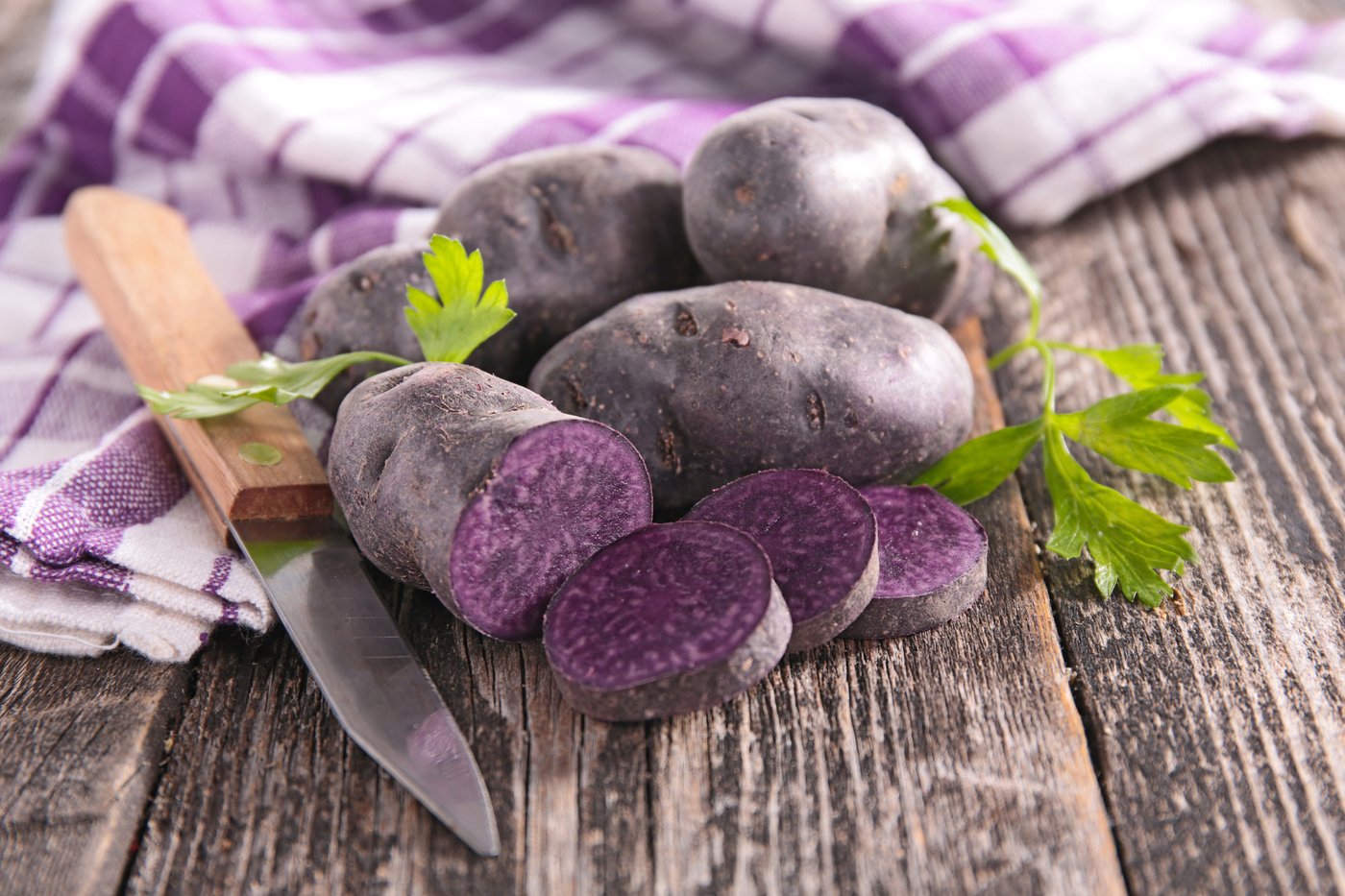
Curious about the Russian Blue Potato? This unique spud isn't just a feast for the eyes with its striking blue-purple skin and flesh; it's also packed with nutrients. Originating from South America, this potato has made its way into kitchens worldwide due to its rich flavor and health benefits. Russian Blue Potatoes are high in antioxidants, particularly anthocyanins, which give them their vibrant color. They are versatile in cooking, perfect for roasting, mashing, or even making colorful chips. Whether you're a home cook or a food enthusiast, learning about these potatoes can add a splash of color and a boost of nutrition to your meals.
Key Takeaways:
- Russian Blue Potatoes are not only visually stunning but also packed with nutrients like vitamin C, potassium, and fiber, making them a healthy and delicious addition to any meal.
- These vibrant tubers are not just for eating; they can also be grown at home with proper soil, planting time, spacing, watering, and harvesting techniques. Plus, they have a rich historical and cultural significance!
What is a Russian Blue Potato?
The Russian Blue Potato is a unique and colorful variety of potato known for its striking blue skin and flesh. This potato isn't just a feast for the eyes; it also packs a punch in terms of nutrition and flavor. Let's dive into some fascinating facts about this vibrant tuber.
-
Origin: The Russian Blue Potato hails from South America, specifically the Andean region. It's been cultivated for centuries by indigenous people.
-
Color: Its deep blue color comes from anthocyanins, powerful antioxidants also found in blueberries and red cabbage.
-
Nutritional Value: Rich in vitamins C and B6, potassium, and fiber, this potato is a nutritious addition to any meal.
-
Flavor: The taste is often described as earthy and nutty, making it a favorite for gourmet dishes.
-
Cooking Versatility: It can be baked, boiled, mashed, or fried, retaining its color and flavor through various cooking methods.
Health Benefits of Russian Blue Potatoes
These potatoes aren't just pretty; they offer numerous health benefits that make them a smart choice for your diet.
-
Antioxidants: The anthocyanins in Russian Blue Potatoes help fight free radicals, reducing the risk of chronic diseases.
-
Blood Pressure: High potassium levels help regulate blood pressure, promoting heart health.
-
Digestive Health: The fiber content aids in digestion and helps maintain a healthy gut.
-
Immune System: Vitamin C boosts the immune system, helping the body fend off illnesses.
-
Anti-Inflammatory: The antioxidants also have anti-inflammatory properties, which can help reduce inflammation in the body.
Growing Russian Blue Potatoes
Interested in growing your own? Here are some facts to get you started on cultivating these colorful tubers.
-
Soil Requirements: They thrive in well-drained, fertile soil with a pH between 5.0 and 6.0.
-
Planting Time: Plant them in early spring, about two weeks before the last frost date.
-
Spacing: Space the seed potatoes about 12 inches apart to give them room to grow.
-
Watering: Keep the soil consistently moist but not waterlogged to prevent rot.
-
Harvesting: They are usually ready to harvest about 90-120 days after planting.
Fun Facts About Russian Blue Potatoes
These quirky potatoes have some interesting trivia that might surprise you.
-
Historical Use: In ancient times, they were used as a natural dye due to their vibrant color.
-
Popularity: They are gaining popularity in gourmet kitchens around the world for their unique appearance and taste.
-
Storage: Store them in a cool, dark place to keep them fresh for months.
-
Companion Planting: They grow well alongside beans, corn, and cabbage, which can help deter pests.
-
Cultural Significance: In some cultures, they are considered a symbol of prosperity and good luck.
That's a wrap on the fascinating world of Russian Blue Potatoes!
The Final Bite
Russian Blue Potatoes are more than just a pretty face. Their vibrant color isn't just for show; it's packed with antioxidants that can boost your health. These spuds are versatile, fitting into various dishes from salads to soups. They also have a rich history, tracing back to South America before making their way to Russia.
Growing them is a breeze, even for beginners. They thrive in well-drained soil and need minimal care. Plus, their unique color makes them a hit at any dinner table. Whether you're a gardening enthusiast or a foodie, these potatoes offer something special.
So next time you're at the market, grab a few Russian Blues. Your taste buds and your body will thank you. Happy cooking!
Frequently Asked Questions
Was this page helpful?
Our commitment to delivering trustworthy and engaging content is at the heart of what we do. Each fact on our site is contributed by real users like you, bringing a wealth of diverse insights and information. To ensure the highest standards of accuracy and reliability, our dedicated editors meticulously review each submission. This process guarantees that the facts we share are not only fascinating but also credible. Trust in our commitment to quality and authenticity as you explore and learn with us.


